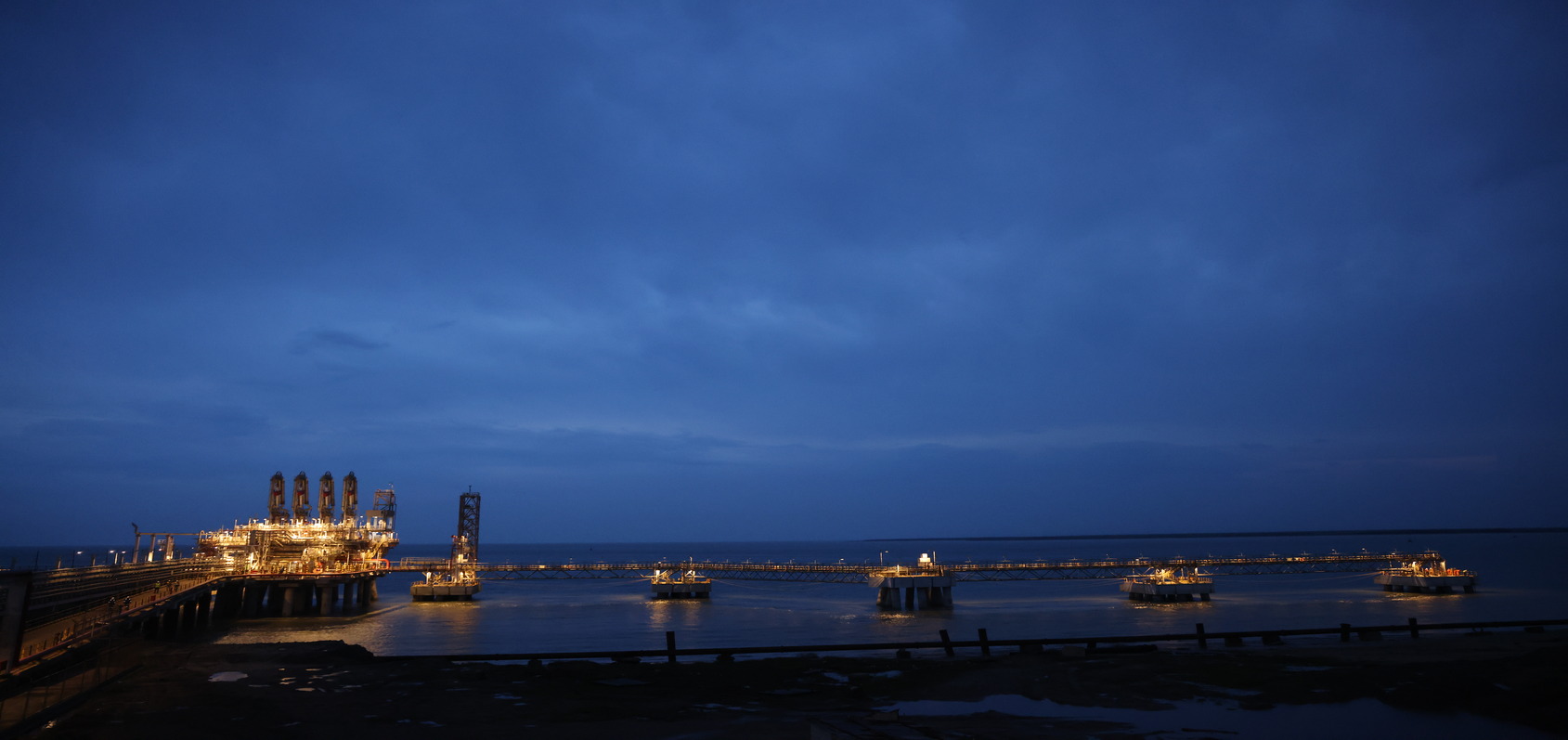LNG
Liquified Natural Gas (LNG) is a colourless, non-toxic, and non-corrosive transparent liquid which primarily consists of Methane and minor quantities of Ethane, Propane and Butane in varying proportions. LNG is natural gas that has been cooled to –260° F (–162° C), changing it from gas into a liquid that is 1/600th of its original volume. This facilitates transportation in cryogenic tankers across geographies.
When LNG reaches its destination, it is regasified at the import terminal. It is then transported mainly though pipelines to homes, commercial establishments, and industries. LNG is now also emerging as a cost-competitive and cleaner transport fuel, especially for shipping and heavy-duty road transport.
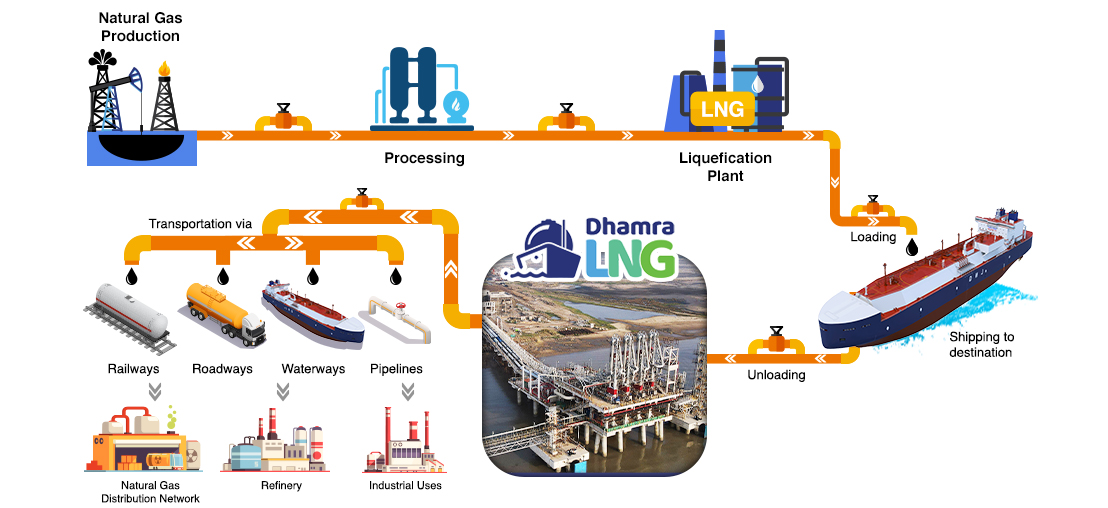
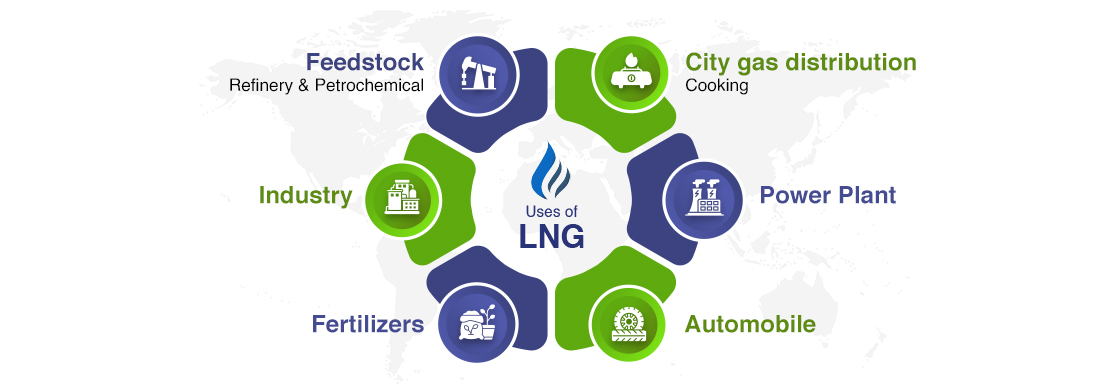
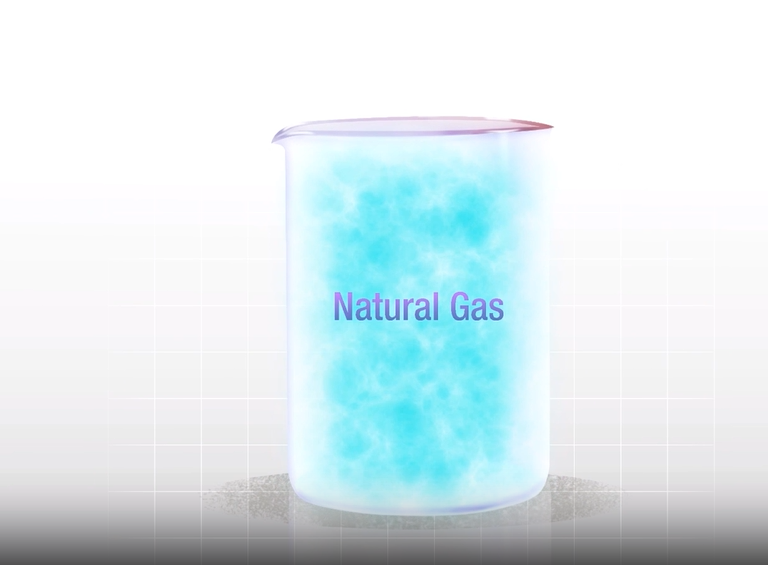
LNG in India
India is one of the fastest growing economies in the world and is the third largest energy consumer in the world after US and China. India’s primary energy demand is expected to grow at a much faster rate than any other major economy of the world.
In line with the strategy of energy transition towards cleaner fuels, LNG is set to play a major role in country’s energy needs in the next decade. As India aims to achieve 15 per cent share of natural gas in the primary energy mix by 2030, LNG infrastructure is stated to grow substantially.
LNG share in the total gas consumption of India has increased from ~30% in 2011-12 to ~50% in 2020-21. LNG is imported through a mix of term and spot contracts. Below graph shows India’s LNG import in recent years:
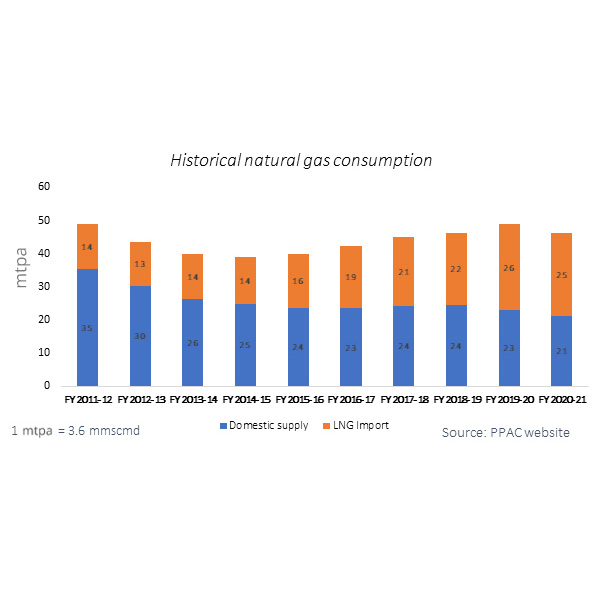
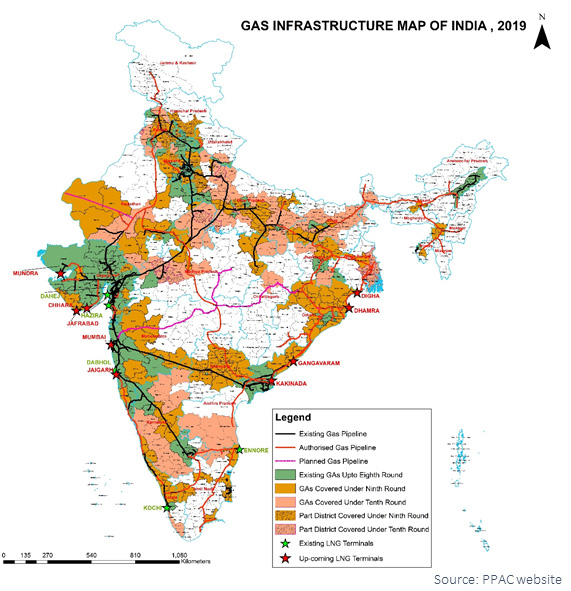
Regas Infrastructure
India’s LNG import capacity is expected to increase substantially by addition/ augmentation of capacities in the east and west coast of India. The graph depicts the details of LNG terminals infrastructure (in mtpa) in India.

